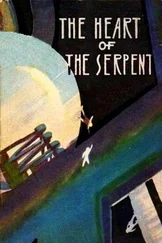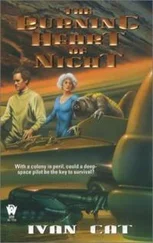of placing the nails according to Nieuwenhuizen’s wishes. Although
he assumed that the grid system was finally coming into its own, he
accepted the given division of labour and made no attempt to decipher
the plan: he concentrated instead on inserting the nails expertly. Now
was the time to explore the ins and outs of the undervalued art of hammering. As he perfected his swing, he brought the effort required for
each insertion down to a single preliminary tap to make the nail stand
on end; two decisive double-fisted smashes to sink it; and a concluding
salvo of tiny blows to ensure that the head was protruding above the
surface to the specified extent (the thickness of his thumb). Nieuwenhuizen sang a song. It was his tent-pitching song, and its
haunting tones brought the bitter-sweet memory of his advent into
Malgas’s mind as clearly as if it was yesterday. However, it also broke
his concentration, and he was relieved when Nieuwenhuizen fell silent
and focused on the measurements.
As for Nieuwenhuizen, when he judged that Malgas had mastered
the full stop, he added the colon and the ellipsis to his repertoire,
although he was careful to keep the combinations simple. Malgas
took it in his stride.
The world turned. The sun trundled like a brass ball across the
leaden bowl of the sky. They didn’t miss a beat.
At one o’clock Mrs Malgas flung her window open and offered “Lunch!” and was turned down by the muted rhythm of the mallet and the sky resounding like a cracked gong. She shut the window and
went away.
Hour after hour, Nieuwenhuizen fumed over the plot, disseminating his indelible punctuation. Malgas dogged his footsteps, discharged
volley after volley of nails, reloaded the bandoleer again and again, and
never once complained.
Night fell at last. The second box of ammunition was broached. By
now the nails had been scattered far and wide; their heads glistened
everywhere, like tiny pools holding the lees of the light. Still there was
work to be done.
Nieuwenhuizen lit the lamp and carried it with him, swinging
wildly from one hand, as he paced. He held it so close to the action
that he singed the hairs on Malgas’s arm. And through it all he kept
demanding, “More light!” and imploring the moon to rise, which it
didn’t. Then Malgas took the unprecedented step of running a leadlight through his kitchen window (Mrs wept) and they soldiered on
with new vigour. In the light cast by the cowled globe Nieuwenhuizen
acquired the stature of a giant, striding across immense, uninhabited
plains, while Malgas, shambling after him, brought his master’s mallet
crashing down on nails as tall as flagstaffs.
Finally the moment came when Malgas reached into the box and
grasped nothing but a mulch of shredded paper. Permission was
granted for him to tear open the brown-paper bundle containing the
Twelve. He intended to slip these too into the bandoleer, but Nieuwenhuizen intervened. The final dozen required special attention. Nieuwenhuizen curled the forefinger and thumb of his left hand
into a loophole and peered through it with his right eye. He panned
across the entire landscape, apprehending each and every nail both
as a distinct entity and as part of a complex pattern, computing the
most abstruse distances and obtuse angles, and considering entirely
unexpected relationships between them. Then he took the lead-light
and explored the spangled darkness, pointing out nooks and crannies
among the glittering constellations underfoot, and Malgas flew the
nails to those spots.
It was done.
A half-jack of Johnny Walker and a nip of Drambuie had been
laid down in the portmanteau and now came to light. “I’ve been saving them for a rainy day,” Nieuwenhuizen explained, “but this starcrossed evening will do.” He also produced a cocktail shaker, made
out of a lampshade and a surgical glove, and in two shakes they had
their feet up and were sipping cocktails out of tin mugs. “It’s a little late for sundowners, and a little early for nightcaps, but
cheers anyway. To you and yours!”
His host’s gratitude, so deeply felt and tastefully expressed, brought
a lump to Malgas’s throat, and he had to wash it down with a slug of
the mixture before he could voice his own appreciation for everything. Then Nieuwenhuizen said, “If you don’t mind I’d like to go over
the plan now, while it’s fresh. If you’re not ready for such heady stuff,
perhaps you should block your ears. Better still, go home to the Mrs.
I don’t want to cause any trouble. Go on, take your drink with you.” “I’d be grateful if I could stay,” Malgas protested. “Plans aren’t my thing, I admit, I’m a supplier at heart — but I’ve got to start some
where.”
“That’s my boy, I was hoping you’d say that. Are you comfortable?
Okay. . where to begin? Yes: the corners. See that nail there, on the
edge of the shadows, and the two behind it, with their heads together?
Well, that, my Malgas, delimits the north-eastern extremity of the
rumpus room.”
Malgas gasped.
“That one there, in line with the letter-box, is the left-hand what’s-its-name. . jamb of the front door. Not that one, my left.” The long shadow of Nieuwenhuizen’s forefinger brushed over the
smooth heads of the nails, weaving a web of diaphanous intent in
which Malgas was willingly ensnared and cocooned. Nieuwenhuizen’s hand, moving now with the delicate poise of a spirit-level, now
with the brute force of a bulldozer blade, levelled terraces and threw
up embankments, laid paving and plastered walls. With a touch, his
skittery fingers could open a tracery of light and air in a concrete slab,
and through it his papery palms would waft a sea breeze laden with salt
and the fruity scents of the orchard. Apricot, blueberry, coconut-milk.
He made it seem so simple.
He began with the situation and dimensions of the rooms, which
were many and various. Then he took the rooms one at a time and
elaborated on the location of doors and windows, built-in cupboards,
electricity outlets, switches and light fixtures. He catalogued special
features, such as burglarproofing, air-conditioning and knotty-pine
ceilings. He dwelt upon the observation deck, the rumpus room and the bomb shelter, all of which, he assured Malgas, had an integral place
in the conception.
“Fascinating,” said Malgas, shaking off the narcotic effects of the
presentation. “But I must admit that I still can’t really see it. There’s
no point in lying about it, is there?”
“Of course not. You’re finding it heavy going because the plan isn’t
quite finished; we’ve still got to join up the dots. When that’s done it
will all become clear. For the time being, don’t lose heart, and practise,
practise, practise. You know what they say.”
“I’ll try. But I feel so clumsy.”
“Let me give you a tip. I find that it helps if I. . I shouldn’t be
telling you this, I’m rushing you again. Let’s wait until you begin to
see on your own.”
“No, no, please go on,” Malgas pleaded, “I’ll stop you if it’s too
much too soon.”
“Just say when. I find that it helps if I think along the following
lines: layers, levels; colour schemes, cutaway views and cross-sections;
also surfaces and sheens; and last but not least, varnishes and veneers.
Consider: the letter-box of the new house. No minor detail, this. The
letter-box. Not exactly a replica of the new house itself, not exactly a
Читать дальше












